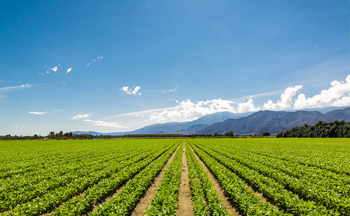Farmers Affected by COVID-19 May Seek Economic Relief from the Department of Agriculture’s Coronavirus Food Assistance Program (CFAP)
May 22, 2020
Downey Brand COVID-19 News and Updates
The COVID-19 pandemic has affected communities worldwide in a swift, unprecedented, and unpredictable manner. Many businesses have been financially affected, and America’s farming community is no exception to the financial impacts of this ongoing public health crisis.
To help alleviate the heavy blow to America’s farming communities, the U.S. Department of Agriculture (USDA) recently announced the start of a new program, the Coronavirus Food Assistance Program (CFAP). Under CFAP, the federal government would provide up to $16 billion in direct payments to America’s farmers affected by the pandemic. The funding comes from two sources: the Coronavirus Aid, Relief, and Economic Stability (CARES) Act and the Commodity Credit Corporation Charter Act. According to Secretary of Agriculture Sonny Perdue, the CFAP is designed to “keep American farmers afloat while market demand returns as our nation reopens and recovers.”
A copy of the USDA’s Final Rule establishing the CFAP can be found here.
To qualify for CFAP financial relief, farmers must show either that they have suffered a five-percent-or-greater price decline due to the pandemic, or that they have suffered losses due to the market supply chains’ response to COVID-19 and will continue to face additional market costs.
Additionally, farmers must show they are producers of eligible commodities during the period of January 15, 2020 through May 14, 2020. Here are some of the eligible commodities:
- Non-Specialty Crops: malting barley, canola, corn, upland cotton, millet, oats, soybeans, sorghum, sunflowers, durum wheat, and hard red spring wheat.
- Wool
- Livestock: cattle, hogs, and sheep (lamb and yearlings)
- Dairy
- Specialty Crops: Farmers may also be eligible for relief based on a number of specialty crops, including, almonds, beans, broccoli, sweet corn, lemons, iceberg lettuce, spinach, squash, strawberries, and tomatoes.
According to the USDA, it would consider additional crops by collecting information on potentially eligible crops. Farmers may submit comments regarding additional commodities.
Farmers must also show they have an average annual adjusted gross income of less than $900,000, using their adjusted gross incomes from the 2016, 2017 and 2018 tax years. This limit does not apply if 75% of the adjusted gross income comes from farming, ranching, or forestry-related activities. Farmers must also be in compliance with all conservation compliance laws and have no controlled substance violations. A foreign individual or entity applying for relief should be further prepared to show that land, capital, and personal labor were provided to the farming operation.
The CFAP applications open on Tuesday, May 26, 2020 and are available through your local Farm Service Agency (FSA). Applications close on Friday, August 28, 2020. If you plan to submit an application, in the meantime, you should begin gathering essential information, including but not limited to: name and address, personal information including a Tax ID number, your farm operating structure, adjusted gross income compliance certification, and direct deposit information to enable payment processing.
Additional information on the CFAP can be found at farmers.gov/cfap. Should you have any questions please feel free to reach out to a Downey Brand attorney in our Food & Agriculture practice.

